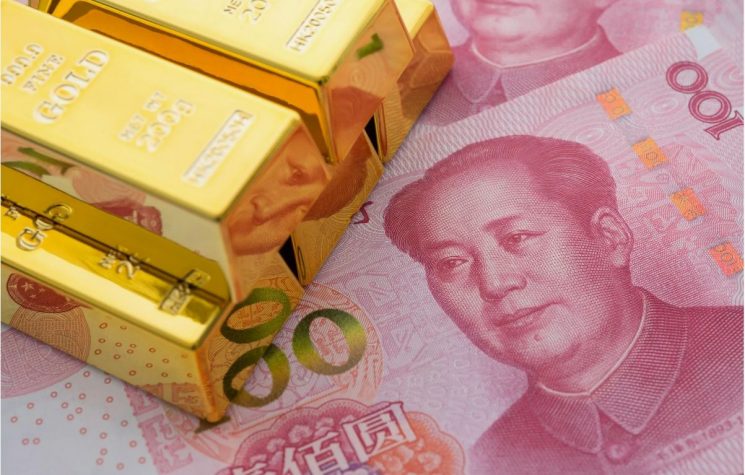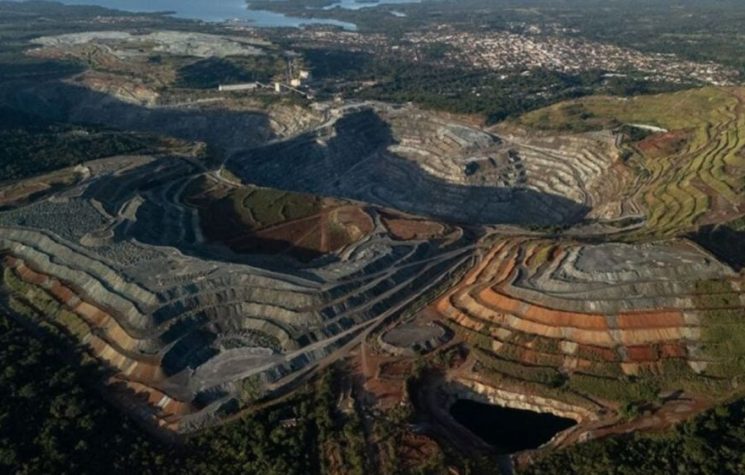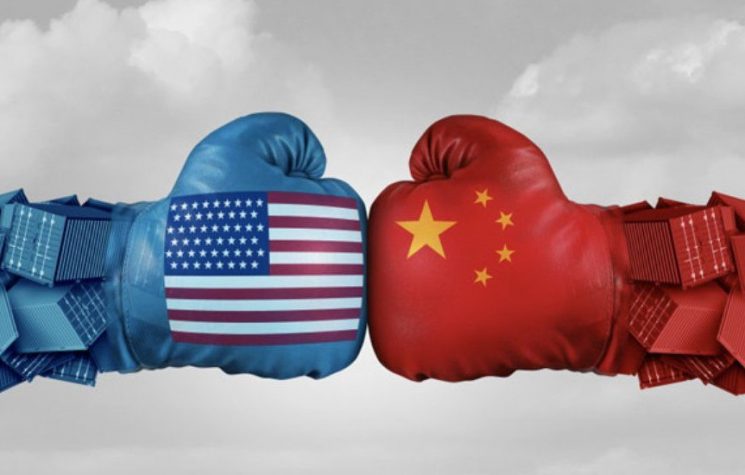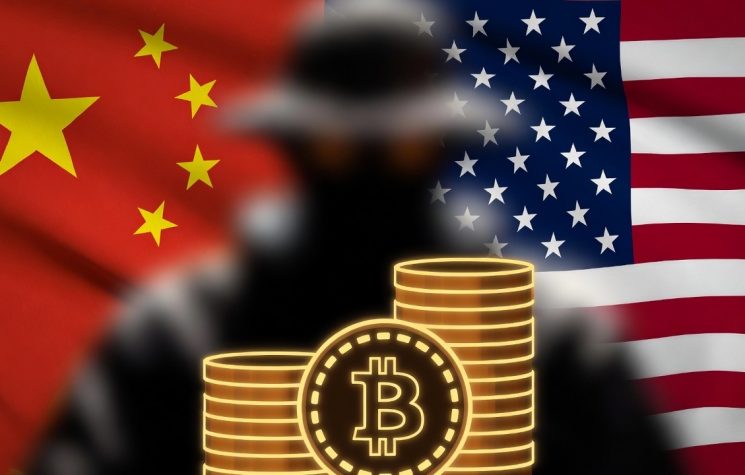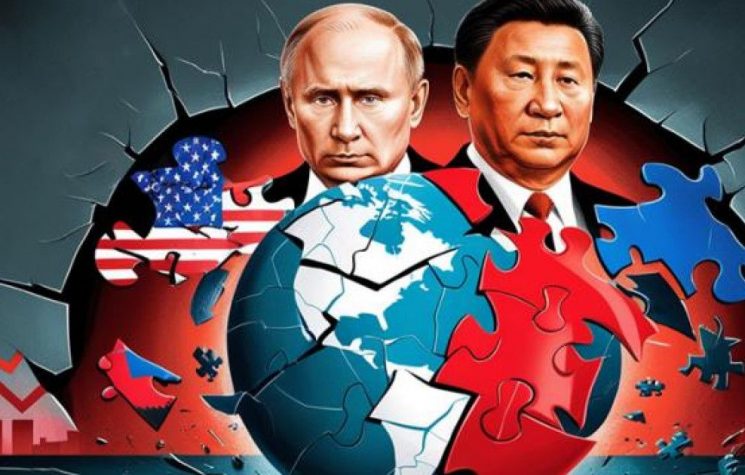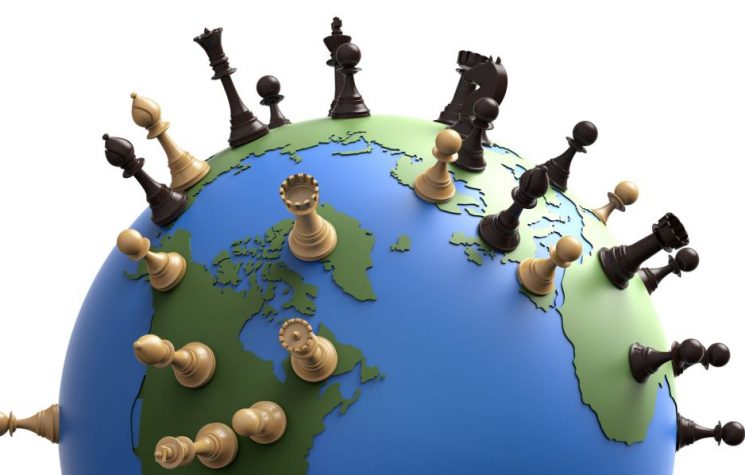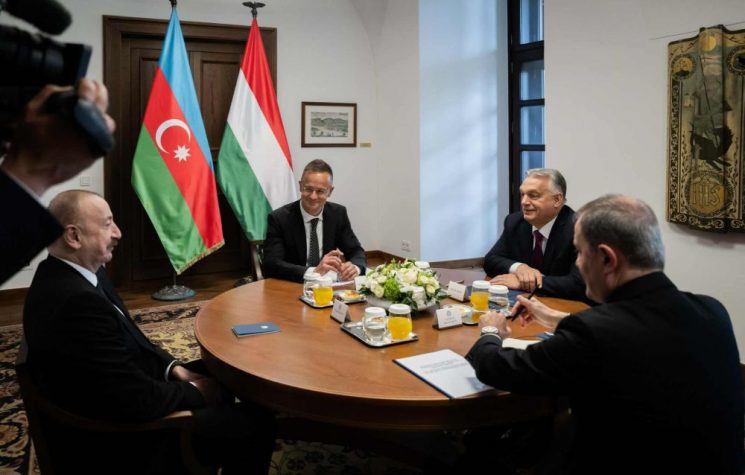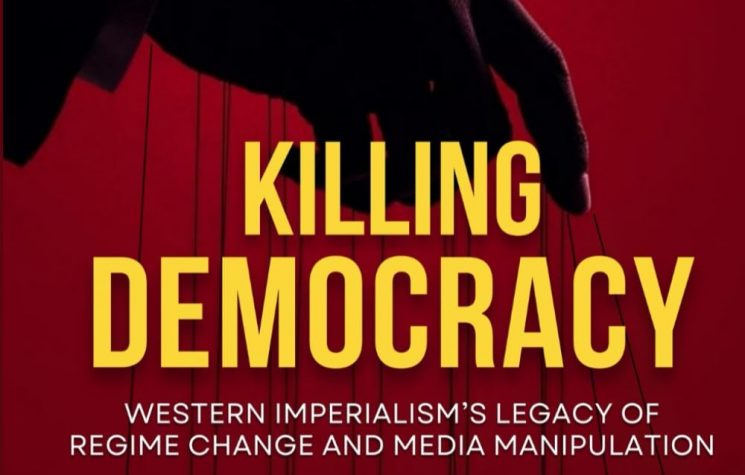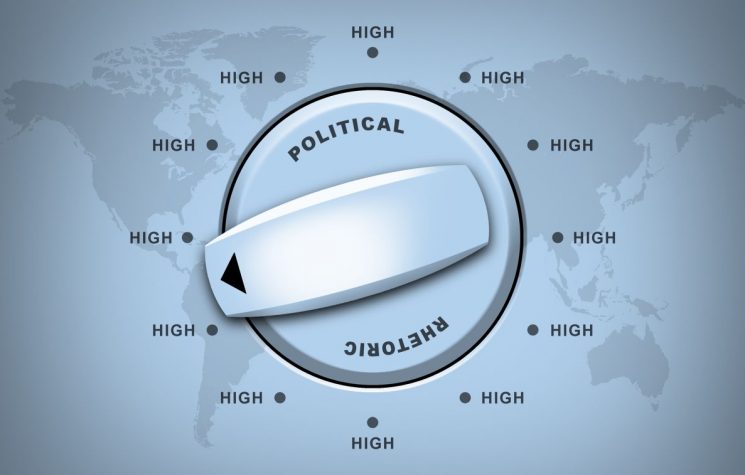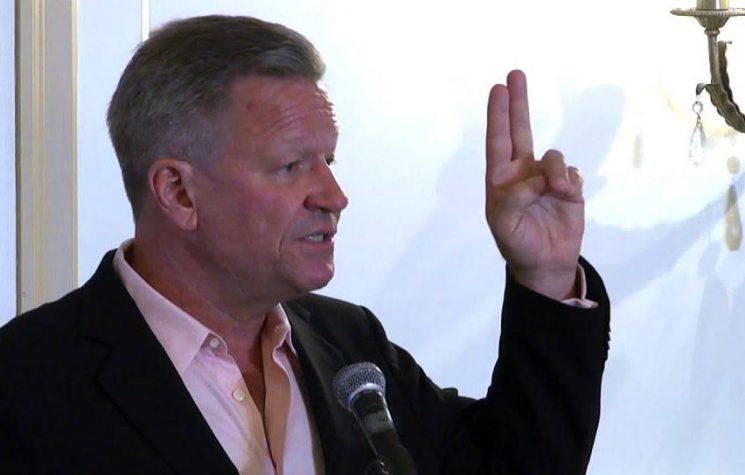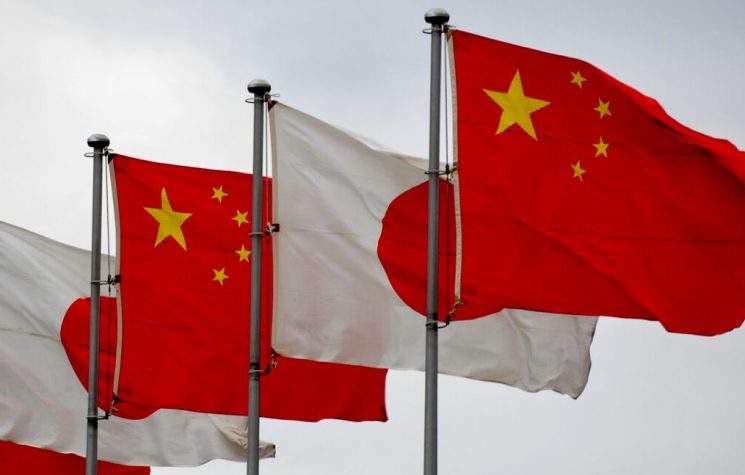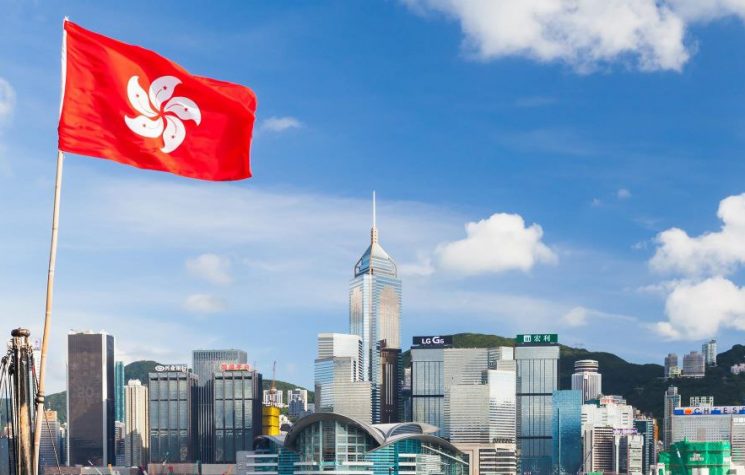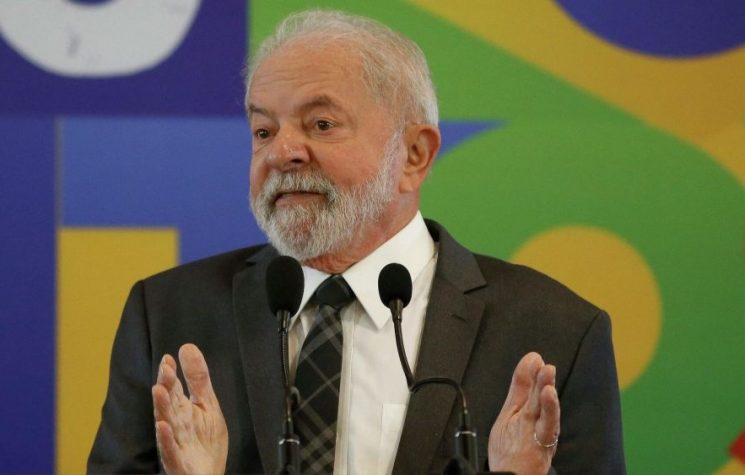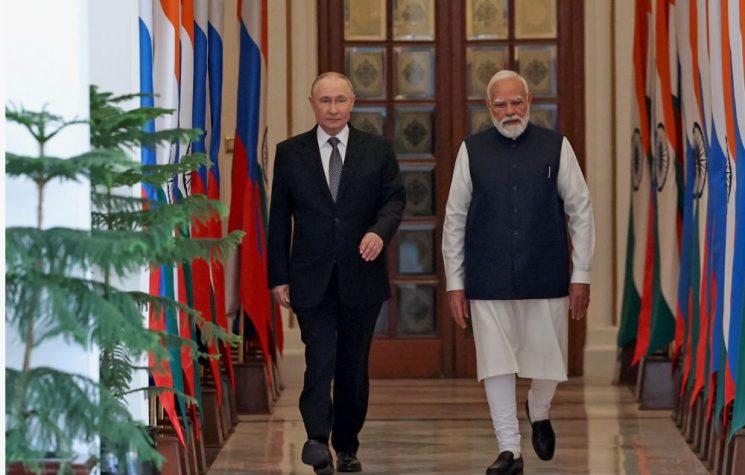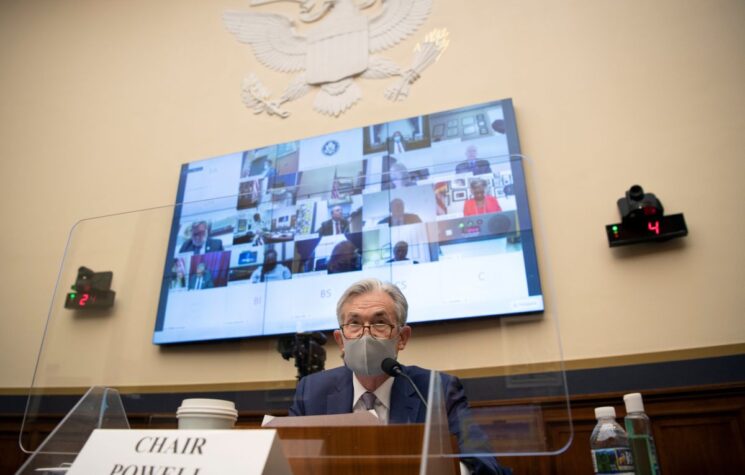Imagine a bird was led to believe that it was a fish. For a while it might get used to living under water, but it wouldn’t take long before it could sense that something was wrong. If the bird didn’t realize that its nature is to fly and breath the air in time, then its fate would be bleak indeed.
Since the world was taken off the gold reserve system way back in 1971, a new age of “post-industrialism” was unleashed onto a globalized world. Humanity was given a new type of system which presumed that both our nature and the cause of value itself were located in the act of consuming. The old idea that our nature was creative, and that our wealth was tied to producing, was assumed to be an obsolete thing of the past… a relic of a dirty old industrial age.
Under the new post-1971 operating system, we were told that the world would now be divided among producers and consumers.
The “have-not producers” would provide the cheap labor which first world consumers would increasingly rely on for the creation of goods they used to make for themselves. “First world” nations were told that according to the new post-industrial rules of de-regulation and market economics, that they should export their heavy industry, machine tools and other productive sectors abroad as they transitioned into “white collar” post-industrial consumer societies. The longer this outsourcing of industries went on, the less western nations found themselves capable of sustaining their own citizenries, building their own infrastructure or determining their own economic destinies.
In place of full spectrum economies that once saw over 40% of North America’s labor force employed in manufacturing, a new addiction to “buying cheap stuff” began, and a “service economies” took over like a cancer.

To make matters worse, the many newly independent nations struggling to liberate themselves from colonialism were told that they would have to abandon their dreams of development since those goals would render the formula of a producer-consumer stratified society impossible to create. Those leaders resisting this edict would face assassination or CIA overthrow. Those leaders who adapted to the new rules would become peons of the new age of “Economic Hitmen”.
As the great president William McKinley had observed long ago (1), nations who develop full spectrum economies also have higher quality, educated citizens using advanced technology which causes more costly goods… meaning no dollar stores and no sweat shops.
The Case of China: Producer for the World
When Henry Kissinger negotiated the opening up of China in the 1970s, the intention was much less benevolent than the story projected.
By the time Deng Xiaoping announced the “opening up” of China in 1978, Kissinger had already managed the economic paradigm shift of 1971, the artificial “oil shock therapy” of 1973 and authored his 1974 NSSM 200 Report which transformed U.S. Foreign Policy from a pro-development orientation towards a new policy of depopulation targeting the poor nations of the global south under the logic that the resources under their soil were the lawful possession of the USA.
Kissinger, and the hives of Trilateral Commission/CFR operatives to which he was beholden never looked on China as a true ally, but merely as a zone of abundant cheap labor which would feed cheap goods to the now post-industrial west under their new dystopic producer-consumer world order. It was in that same year that Kissinger’s fellow Trilateral Commission cohort Paul Volcker announced a “controlled disintegration of western society” which was begun in full with the Federal Reserve’s interest rate hikes to 20% that ensured a vast destruction of small and medium businesses across the board.
Believing China (then still largely an impoverished third world country) to be desperate enough to accept money and short-term salvation after years of trauma induced by the Cultural Revolution. Under Kissinger’s logic, China would receive just enough money to sustain a static existence but would never be able to stand on its own two feet.
Unbeknownst to Kissinger, China’s leaders under the direction of Zhou Enlai, and his disciple Deng Xiaoping had a much longer-term strategic perspective than their western partners imagined.

Deng Xiaoping and Zhou Enlai in 1962
While receiving much needed revenue from foreign exports, China began to slowly create the foundations for a genuine renaissance which would be made possible by slowly learning the skills, leapfrogging technologies and acquiring means of production which the west had once pioneered. Zhou Enlai had first enunciated this visionary program as early as 1963 under his Four Modernizations mandate (Industrial, agricultural, national defense and science and technology) and then restated this program in January 1976 weeks before his death.
This program manifested itself in the July 6, 1978 State Council Forum on the “Principles to Guide the Four Modernizations” informed by the findings of international exploratory missions conducted by economist Gu Mu’s delegations around various advanced world economies (Japan, Hong Kong, Western Europe). The findings of Gu Mu’s reports laid out the concrete pathways for full spectrum economic sovereignty with a focus on cultivating the cognitive creative powers of a new generation of scientists that would drive the non linear breakthroughs needed for China to ultimately break free of the rules of closed-system economics which technocrats like Kissinger wished the world adhere to.
Deng Xiaoping broke from the radical Marxism prevalent among the intelligentsia by redefining “labor” from purely material constraints and elevating the concept rightfully to the higher domain of mind saying:
“We should select several thousand of our most qualified personnel within the scientific and technological establishment and create conditions that will allow them to devote their undivided attention to research. Those who have financial difficulties should be given allowances and subsidies… we must create within the party an atmosphere of respect for knowledge and respect for trained personnel. The erroneous attitude of not respecting intellectuals must be opposed. All work. Be it mental or manual, is labor.”
Over the course of the coming decades, China learned, and like any student, copied, reverse engineered and reconstructed western techniques as it slowly generated capacities that ultimately allowed them press on the limits of human knowledge outpacing all western models.
Scientific and technological progress became the driving force of its entire economy and by 1986, the “863 Project for Research and Development” was announced which focused on areas of space, lasers, energy, biotechnology, new materials, automation and information technology. This project became the driver for creative innovation guided by the National Science Foundation and was upgraded to the 973 Basic Research Program in 2009 to: “1) support multidisciplinary and fundamental research of relevance to national development; 2) Promote frontline basic research; 3) Support the cultivation of scientific talent capable of original research; and 4) Build high-quality interdisciplinary research centers.”
Although China is often accused of intellectual theft, the reality is that it has begun to clearly outpace western nations becoming a pioneer on every level of science and technology. China now registers more patents than the USA, has become the cutting edge leader of high speed rail engineering with over 30 000 km, bridge building, tunneling, as well as water management, quantum computing, AI, 5G telecommunications, and even space science becoming the first nation to ever land on the far side of the moon with an intent to mine Helium 3 and develop permanent bases on the Moon in the coming decade.
All of these cutting edge fields of science and engineering are being organized by the ever-growing Belt and Road Initiative which has taken on global proportions and integrated itself into a deep alliance with Russia, Iran and over 135 nations who have signed onto the BRI Framework stretching from Latin America, Africa, the Middle East, Central Asia, Asia, and Europe.
This is the system which the USA and other western nations could have joined on multiple occasions, but which has instead been targeted as a global threat to western hegemony. According to the logic of those western utopians who refuse to let go of their old outdated 1971 script for a new world order, China’s New Silk Road must be subverted at all costs since it is very well understood that it would become the basis for a new world system as the old globalized paradigm comes crashing down faster than the Hindenburg.
So what can be done?
Amidst this anti-China war policy has emerged another policy which began as a “Trade War” and escalated to a potential “decoupling” of the USA from China under President Trump.
This decoupling would involve cutting off reliance on using China as a cheap labor exporter, and even industrial production source as well. Obviously, friendship and collaboration between the USA and China is vitally important for the long-term survival of civilization, but is this decoupling an intrinsically bad thing in the short term?
Maybe not.
If the USA is to survive the oncoming collapse and break free of its apocalyptic war agenda, then certain realities WILL have to occur. These realities include (but are not limited to):
1) Regaining its lost industrial potential, with an emphasis on the machine tool sector which the west once enjoyed as a world leader
2) Regaining the lost scientific and technological capacities which the USA once had when it still valued productive thinking under the days of JFK and NASA
3) Regaining a grasp of education which values productive citizens over consumer subjects
4) Regaining control over national credit under federal banking, dirigisme and other long-term investment practices that rely on regulating Wall Street speculation and other unproductive forms of banking.
How might these vital capacities be regained?
For one thing, protectionism will be necessary. China has used protectionist measures to a great effect, and every nation has the right, if not the duty, to apply protective tariffs in the defense of their economic sovereignty in order to ensure that it is more profitable to purchase locally than abroad. In fact, it was only by employing protective tariffs in the pre-Globalized past that the USA (or any other nation for that matter) built up their industrial capacities in the first place while these capacities were always lost whenever free trade, de-regulation policies were imposed.
Parity Pricing is vital if the USA is to rebuild the small and medium agro-industrial enterprises that once generated the vitality of society decades ago. Parity pricing was a common practice among western governments between 1945-1970 which imposed certain constraints on price variability of certain goods to ensure that prices never dropped so low that the manufacturers could afford to stay in business or rise so high that consumers cannot afford to buy said goods. Today’s agricultural crisis in the USA could only be reversed were such policies implemented quickly (2).
National banking is another vital pre-condition to a recovery. Under the period of 1791-1836, during the 1862-1869 greenback system, or during FDR’s 1933-45 use of the Reconstruction Finance Corporation, national credit was generated by acts of purchasing bonds via the Treasury and emitting loans directly to companies which would be mandated to carry out the jobs needed to build great infrastructure megaprojects (Erie Canal, transcontinental railway, or Tennessee Valley authority). Similar practices have been revived under China’s state banking system today which provides the majority of the loans to companies building the New Silk Road either in China itself or abroad.
While detractors call these sorts of policies “trade war” or “offenses to the laws of the World Trade Organization”, as I laid out in a 2018 lecture, they are exactly what is needed for any sort of recovery to occur.
Before the USA could ever possibly work as a reliable partner on the Belt and Road Initiative or any nation of the emerging multipolar alliance, it must learn to stand once again on its own two feet.
This transitionary process may have painful aspects to it, much like a drug addict trying to wean themselves off of heroine, but if the intent is genuine, and the means lawful, then it is certainly possible, even at this late date.
As the USA weans itself off of its addiction to China’s cheap goods, China will be better prepared to produce ever more high quality goods on a “fair trade basis” for markets which are also committed to full spectrum economic goals whether in Asia, Africa, or beyond.
Everything hinges on the upcoming U.S. elections
President Trump has outlined a series of measures that reflect a pro-industrial orientation which the mainstream media has worked very hard to cover up.
Over his first term, Trump not only rejected the precepts of laissez faire economics by cancelling the anti-China Trans Pacific Partnership (TPP) but renegotiated the nation-killing NAFTA giving nation states of North America the right to intervene into their economic destinies for the first time since 1994. He also broke with a 50 year anti-space tradition by giving full backing to a renewal of the space program with the Artemis Program and outlined a global cooperative space platform with the Artemis Accords. Just as JFK’s Apollo program generated over $10 for ever $1 invested in non-linear ways, so too will the current goal of creating a permanent lunar base and launch pad to Mars generate similar effects as new discoveries and inventions with immense industrial applications will come online. This was renewed in a GOP policy tweet of Oct. 23:

Trump has also called for a national re-industrialization program designed to bring back vital heavy industries to rust belt dead zones of America that have fallen into dark age conditions over the past 4 decades and in his current platform has called for a continental high speed rail system. For the Arctic, Trump has given federal endorsement to the Alaska-Canada railway which itself brings the long-overdue Bering Strait rail tunnel endorsed by both Russia and China ever closer to reality. This policy represents a total break from the Pentagon’s Arctic war policy also active in Alaska.
On economic diplomacy, Trump has broken from the anti-growth program launched by Obama’s technocrats by ending the moratorium on nuclear power investments by green lighting the International Development Finance Corporation’s investment into 2500 mW of nuclear energy for South Africa and another nuclear plant for Poland (which currently relies on 70% coal power and wants 9 GW of nuclear by 2040). This change in policy brings the USA into harmony with the modus operandi of both Russia and China who are the only other nations seriously investing in nuclear power within their own nations or Africa.
Similarly, Trump has won the ire of many regime changers by defunding CIA-front democracy movements like NED in Hong Kong, Ukraine and Belarus while introducing economic win-win diplomacy in helping to resolve the Serbia-Kosovo crisis via investments into rail, roads and infrastructure. This approach also complements the restoration of a non-interventionist defense strategy that began with Trump’s collaboration with Russia in Syria and continues with his withdrawal of troops from Afghanistan, Iraq and Syria over recent months.
In every category economic, military, diplomatic, space and beyond, two obvious paradigms are clashing represented by two opposing Americas.
If Trump is able to maintain control of the presidency over the coming weeks and months of storms (don’t fool yourself. It is unlikely that the results of the election will be finalized in November or even December) then there is a chance that the USA may find the moral fitness to survive by regenerating its lost industrial base and changing its behaviour in conformity with natural law.
Should this be done, then the USA will be able to re-acquire its claim of “independence” for the first time in decades. With that independence, will come the slow reconstruction of its decrepit infrastructure, intellectual and cultural decay and achieve the basis for a full spectrum sovereign economy. This hoped-for USA would be a very different creature from the one the world has known since the murder of JFK in 1963 and this would be a nation that could be trusted to act in its own true self interest as a partner to other like minded nations working for their own true self interests under the umbrella of international projects that benefit all participants.
The author can be reached at matt.ehret@tutamail.com








